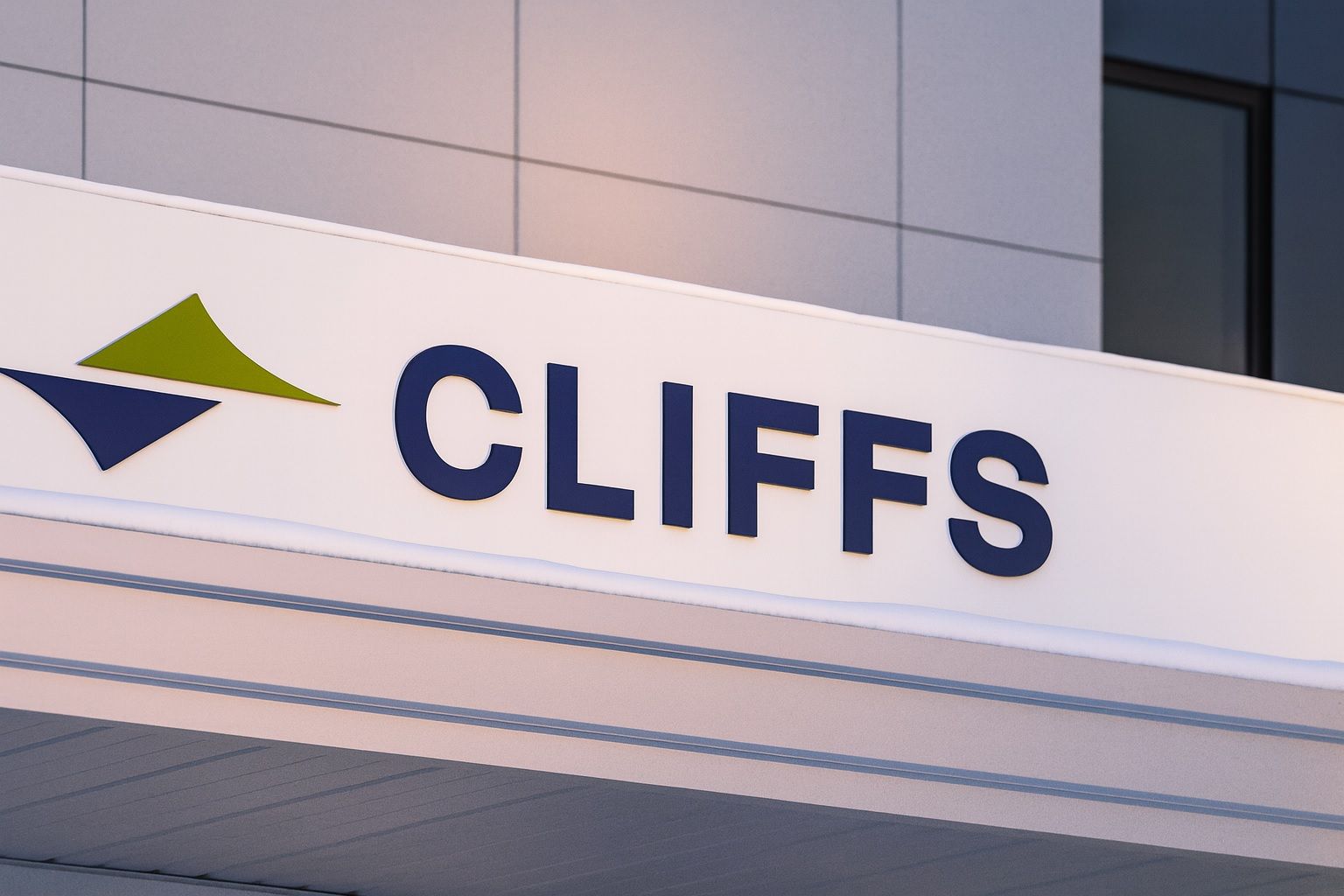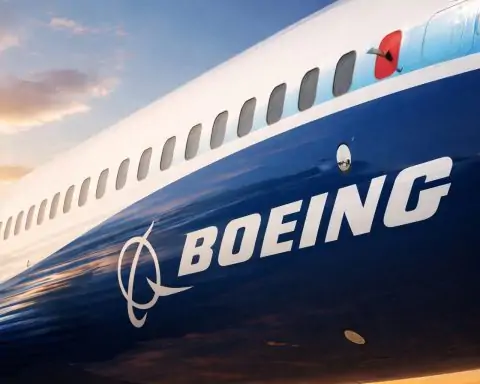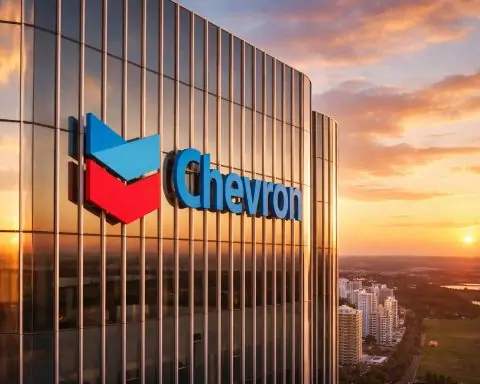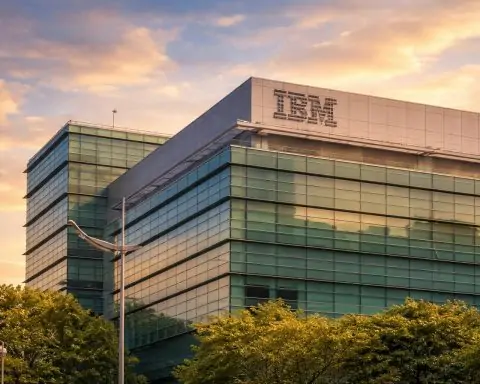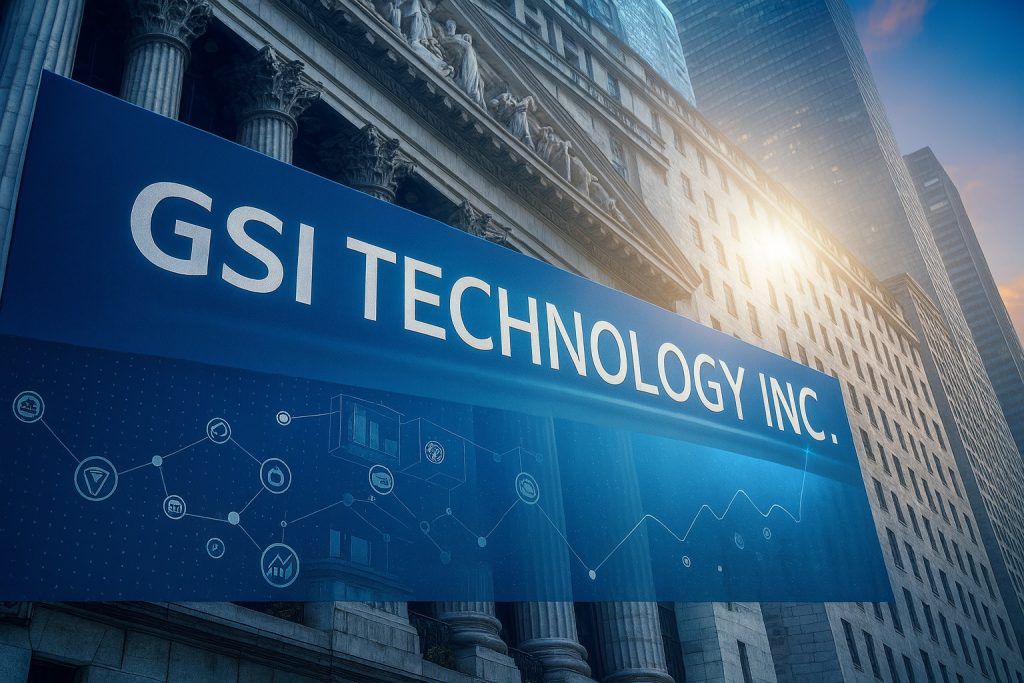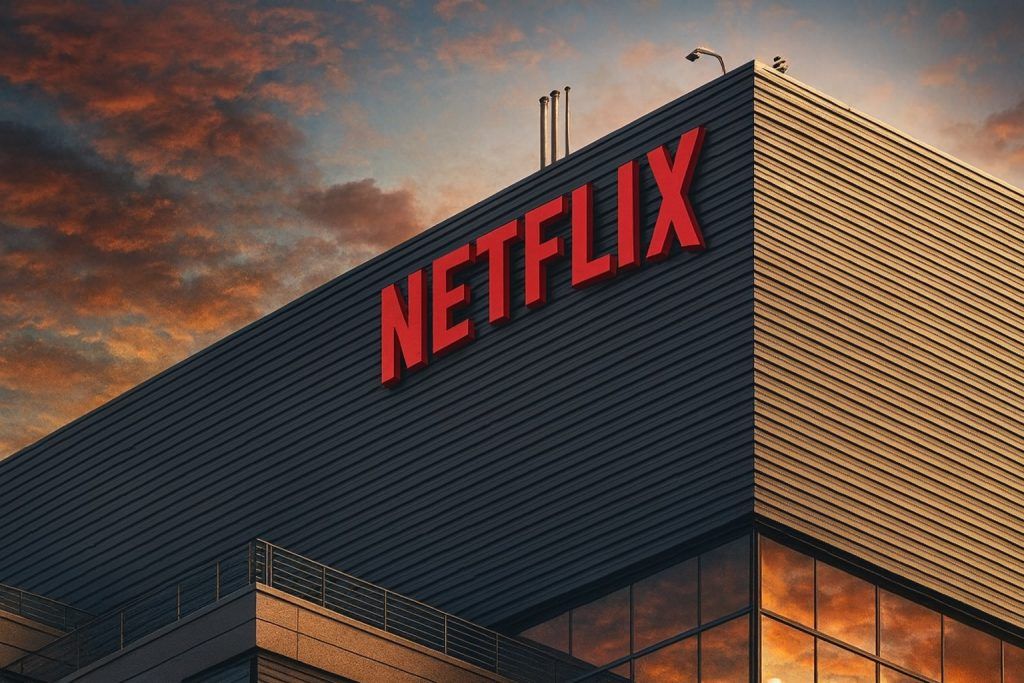- Stock Surge: CLF shares jumped roughly 20% on Oct. 20 after the company’s Q3 earnings and strategic announcements [1], closing around $15.50 (up ~16% on the day) after briefly trading near $16.50 (a 52-week high). The rally brings CLF’s year-to-date gain to roughly 40–42% [2] [3], far outpacing peers like Nucor.
- Quarterly Results: Cleveland-Cliffs reported Q3 revenue of about $4.73 billion (up ~3.6% YoY) and an adjusted loss of ~$0.45 per share (roughly in line with forecasts) [4] [5]. Steel shipments were 4.0 million net tons. On an adjusted basis, CLF still lost money, though the loss ($0.45) was narrower than the $0.48/share Wall Street expected [6].
- Tariff-Fueled Demand: Company executives credited new U.S. steel tariffs (50% on imports) for reviving domestic demand, especially in auto steel. CEO Lourenco Goncalves said the “new trade environment” allowed Cliffs to win multi-year supply contracts with all major U.S. automakers [7] [8]. He described the U.S. as “now hostile territory for dumped steel from abroad” and noted that Cliffs – as the only fully integrated U.S. producer – has locked in favorable multi-year auto steel agreements [9] [10].
- Rare-Earth Initiative: In a surprise strategic move, Cliffs will explore its Michigan and Minnesota iron-ore mines for rare-earth elements (REEs). The company said geological surveys at those sites show “key indicators of rare-earth mineralization,” and that this effort “aligns Cleveland-Cliffs with the broader national strategy for critical material independence” [11] [12]. Goncalves noted it is “our obligation” to pursue this, adding “American manufacturing shouldn’t rely on China or any foreign nation for essential minerals” [13] [14]. Investors cheered this potential new revenue stream, although it remains in early stages.
- Analyst Views: Wall Street is mixed. The consensus rating is around Hold/Moderate Buy, with an average 12-month target of about $11–$12 [15] [16] – roughly 25–30% below the current share price. Some firms have nudged targets higher (Goldman Sachs to $14.50, BofA to $14.50, JPMorgan to $13) following the news [17] [18]. However, many analysts warn Cliffs’ profits are still negative and tied to tariff policies. Bulls cite Cliffs’ dominant U.S. auto-steel position and new rare-earth initiative; bears point to the company’s high debt and uncertainty if trade policies shift [19] [20].
Stock Price and Recent Movement
On Oct. 20, CLF stock surged after-market, reflecting the earnings and strategic announcements. TS2 reports the stock “jumped nearly 20% on October 20, 2025”, reaching an intraday high around $16.50 before settling at about $15.50 [21]. This lifted the share price to a new 52-week high and brought the year-to-date gain to roughly +42% [22] [23]. For comparison, U.S. steel peers like Nucor saw much smaller moves; Nucor’s stock was up ~17% YTD and edged up modestly in late Oct, while CLF jumped sharply [24]. Broad market action was relatively stable on Oct. 20, suggesting CLF’s move was company-specific. As of Oct. 21, CLF is trading in the mid-$15s to $16 range, well above where analysts had forecast its value. TS2 notes that at around $15.50 on Oct. 20’s open, the stock was about 25–30% above the average analyst target [25] [26].
Q3 Earnings and Business Update
Cleveland-Cliffs’ own filings confirm a modest recovery in steel sales. Q3 revenue was $4.73 billion, up from $4.57 B a year ago [27], though just shy of the ~$4.90 B analysts had projected [28] [29]. Steel shipments were 4.0 million net tons, up from 3.84 M a year prior. The company reported a GAAP net loss of $234 M (about $0.45 per share) [30], essentially unchanged year-over-year. After adjustments, the loss was still ~$0.45/sh, slightly better than the $0.48 loss Wall Street expected [31]. Cliffs’ liquidity remained solid (~$3.1B cash on hand) and it improved cost controls and sales mix, but high interest expense and legacy contracts kept it unprofitable.
CEO Lourenco Goncalves highlighted that auto-sector demand is rebounding. In the earnings release he said, “Our third quarter results marked a clear sign of demand recovery for automotive-grade steel made in the USA, and that is a direct consequence of the new trade environment” [32]. In other words, higher U.S. tariffs have priced out much imported auto steel. Goncalves noted Cliffs has now “won new and growing supply arrangements with all major automotive OEMs, locking in multi-year agreements” [33] [34]. These deals (covering 2025–28) should underpin future volume and pricing. The company’s CEO also announced a Memorandum of Understanding (MOU) with a major global steel producer [35] [36], aimed at leveraging Cliffs’ U.S. facilities. Analysts at Jefferies remarked that such a transaction “may be accretive to Cliffs shareholders,” as foreign producers seek tariff-free U.S. exposure [37].
On the rare-earths front, Cliffs is pivoting into critical minerals. It will begin exploratory surveys at two of its iron ore mines (one in Michigan, one in Minnesota) for rare earth elements. The Q3 conference call and press release quote Goncalves: “the renewed importance of rare earths has driven us to re-focus on this potential opportunity at our upstream mining assets,” noting that surveys at those sites “show key indicators of rare-earth mineralization” [38]. He added that if successful, Cliffs would “align … with the broader national strategy for critical material independence, similar to what we achieved in steel,” and declared “American manufacturing shouldn’t rely on China… for essential minerals” [39] [40]. This rare-earth initiative garnered investor enthusiasm, as the U.S. government has been calling for domestic supply of minerals now dominated by China.
Trade Policies and Market Context
Global and U.S. steel markets provide context for Cliffs’ surge. Earlier in 2025 the U.S. (under the Trump administration) raised tariffs to 50% on imported steel and 25% on medium/heavy trucks [41]. Cliffs management says this protection has made the U.S. “hostile territory for dumped steel from abroad” [42], effectively insulating its market. Industry data show U.S. steel capacity utilization at ~76% (week of Oct. 11, 2025), up from a trough in 2024, reflecting stronger domestic demand under tariffs [43]. Hot-rolled coil (HRC) prices in the Midwest trade around $800–$815/ton (above recent lows) [44], while Chinese domestic prices remain roughly half as high, underscoring the impact of trade barriers [45].
According to the World Steel Association’s Oct 2025 outlook, U.S. steel demand is forecast to rebound ~1.8% in 2025, driven by production pulled forward ahead of tariffs and by ongoing infrastructure spending [46]. This outlook notes that, in contrast, China’s steel demand continues to decline (~2% drop in 2025) [47]. In short, global steel is flat/slow growth, but the U.S. is a relative bright spot thanks to fiscal stimulus and trade policy. Domestically, the government’s infrastructure programs (including housing and transportation bills) are expected to underpin future steel use, another long-term tailwind.
Meanwhile, the iron ore market – critical raw material for Cliffs – is calm. Mid-Oct iron ore spot prices hovered around $105–$110 per tonne [48], near recent lows due to mixed global demand and U.S.–China trade tensions. Chinese ore consumption recovered somewhat after Golden Week but new geopolitical disputes kept prices subdued [49] [50]. Investors will watch ore costs (and scrap availability) as factors in Cliffs’ profit margins, but for now tariffs help maintain domestic steel pricing.
Analyst and Expert Commentary
Financial analysts are taking a cautiously optimistic stance. Market trackers (MarketBeat/StockAnalysis) show a roughly 3-5-2 split of Buy/Hold/Sell ratings on CLF, implying a consensus “Hold” or modest Buy [51]. The average 12-month target among 11 analysts is only ~$11.90–$12.36 [52] [53], well below the current share price. Many analysts acknowledge the tariff-driven upturn: e.g. Goldman Sachs on Oct. 9 raised its target to $14.50 and reiterated a Buy [54], citing Cliffs’ integrated model and new ventures. KeyBanc earlier upgraded to Overweight with a $14 target after seeing improving fundamentals [55]. JPMorgan, while neutral, bumped its target to $13 [56], noting tariffs but not forecasting much upside beyond that. Bank of America lifted its target to $14.50 [57] but explicitly warned Cliffs is “fairly valued” given its heavy debt load. On the bearish side, Morgan Stanley’s target is only $10.50 [58] (Equal-Weight) and independent Weiss Ratings still has a Sell grade. These skeptics point out Cliffs remains loss-making with a leveraged balance sheet, and they caution a policy reversal could sharply hurt profits [59] [60].
In plain terms, bulls and bears are at odds. Bulls argue that Cliffs is uniquely positioned – it dominates U.S. auto steel manufacturing, has secured long-term contracts, and is now tapping into critical minerals – so it should continue to gain market share and eventually profitability as the economy grows [61]. Some optimists even speculate Cliffs’ strong asset base could attract a strategic buyer or merger. Bears counter that the company is essentially priced for perfection: it still has negative earnings, the rally is entirely tariff-driven, and a change in trade policy or a downturn in auto production would undermine its value [62] [63]. For now, most professional analysts advise a balanced view. “Cliffs is clearly a beneficiary of tariffs,” as one market brief noted, “but if steel prices fall or demand falters, profits could come under pressure ahead” [64] [65]. At least one Motley Fool commentary reminds investors that the rare-earth venture is speculative and the steel fundamentals must improve for long-term gains.
Industry and Sector Trends
Cleveland-Cliffs’ story is part of a broader steel-sector narrative. Global steel demand is roughly flat this year, but regional differences are stark. Economies with infrastructure stimulus (U.S., EU) are seeing modest growth, while export-dependent Asian markets are soft. For example, worldsteel forecasts EU+UK steel use to grow ~1.3% in 2025 (after multi-year declines) thanks to infrastructure and defense projects [66]. India and other emerging markets continue robust expansion, but overall the “developed world” steel demand may only grow ~0.5% in 2025 [67]. In sum, Cliffs is riding a rare wave: strong protectionist tailwinds and domestic investment are giving U.S. producers a temporary advantage.
On commodity inputs, iron ore and coking coal prices remain relatively subdued. Iron ore (62% Fe, CFR China) is around $100–110/tonne. Cliffs sources a mix of Canadian ore, U.S. iron pellets, and metallurgical coal for its blast furnaces. Analysts will watch these input costs and China’s demand cycles, but at present tariff-driven volume gains offset lower raw material prices. The rare-earths angle also ties into big global themes: China has imposed new export curbs on several REEs this month, and the U.S. is eyeing even stiffer tariffs on Chinese goods in retaliation [68]. Cliffs’ move into REEs comes precisely as policymakers from Washington to foreign allies push for secure critical-material supply chains [69] [70].
Balanced Outlook: Bull vs. Bear
Bull Case: Proponents highlight that Cleveland-Cliffs is among the few fully integrated steel makers in the U.S. – it mines ore and makes steel – giving it flexibility and scale. Under high tariffs, it can profitably serve the large U.S. auto and construction markets that many rivals (especially importers) have lost access to [71] [72]. Cliffs has locked in long-term OEM contracts and cut costs, so many costs are already sunk and will be amortized over higher volumes [73] [74]. If U.S. infrastructure bills continue and car production holds up, analysts note Cliffs could finally swing to quarterly profits in 2026. The rare-earth exploration, while speculative, offers a potential bonus if viable mineral deposits are found – possibly creating a new revenue source and insulating Cliffs from pure-steel cyclicality. Strategists even ponder whether Cliffs’ domestic assets might someday be tapped by larger players or government policies for further onshoring of critical industries.
Bear Case: Detractors warn that the recent gains may be unsustainable. Cliffs has deep losses and very high debt (it spent heavily on acquisitions and capex over the years). If steel prices weaken or tariffs are rolled back (for example, in a future administration less hostile to trade), Cliffs’ margins could shrink quickly. Its stock now trades at a steep premium to historical valuation and to healthier peers like Nucor [75] [76]. Some note that Cliffs’ outlook essentially depends on the political environment: should U.S. policy shift or global steel oversupply worsen, Cliffs could face a downturn faster than an EAF scrap-based mill. Even bulls acknowledge that if auto sales slow (due to recession or the EV transition), Cliffs’ new OEM contracts might deliver lower volumes than expected.
In the words of one market analyst: “Many pros are advising investors to stay balanced – acknowledge Cliffs’ improvements, but keep expectations in check.” [77] [78]. The key factors to watch in the coming months will be actual steel demand (especially auto builds), any change to trade policy, and early results on cost control. For now, Cleveland-Cliffs sits at a crossroads of optimism and caution – a case study in how macro policy and strategic pivots can rapidly re-price a beaten-down industrial stock.
Sources: Cleveland-Cliffs Q3 earnings release and call (Oct. 20, 2025) [79] [80]; Reuters, Bloomberg and TS2.tech reports on the Oct. 20–21 rally and strategy [81] [82] [83]; analyst research from MarketBeat/StockAnalysis [84] [85] and media interviews.
References
1. ts2.tech, 2. ts2.tech, 3. ts2.tech, 4. ts2.tech, 5. www.reuters.com, 6. www.reuters.com, 7. www.clevelandcliffs.com, 8. www.reuters.com, 9. www.clevelandcliffs.com, 10. www.reuters.com, 11. ts2.tech, 12. www.foxbusiness.com, 13. www.foxbusiness.com, 14. www.reuters.com, 15. ts2.tech, 16. ts2.tech, 17. ts2.tech, 18. ts2.tech, 19. ts2.tech, 20. ts2.tech, 21. ts2.tech, 22. ts2.tech, 23. ts2.tech, 24. ts2.tech, 25. ts2.tech, 26. ts2.tech, 27. ts2.tech, 28. ts2.tech, 29. www.reuters.com, 30. www.clevelandcliffs.com, 31. www.reuters.com, 32. www.clevelandcliffs.com, 33. www.clevelandcliffs.com, 34. www.reuters.com, 35. www.clevelandcliffs.com, 36. www.reuters.com, 37. www.reuters.com, 38. www.clevelandcliffs.com, 39. www.clevelandcliffs.com, 40. www.reuters.com, 41. www.reuters.com, 42. www.clevelandcliffs.com, 43. steelindustry.news, 44. steelindustry.news, 45. steelindustry.news, 46. worldsteel.org, 47. worldsteel.org, 48. gmk.center, 49. gmk.center, 50. gmk.center, 51. ts2.tech, 52. ts2.tech, 53. ts2.tech, 54. ts2.tech, 55. ts2.tech, 56. ts2.tech, 57. ts2.tech, 58. ts2.tech, 59. ts2.tech, 60. ts2.tech, 61. ts2.tech, 62. ts2.tech, 63. ts2.tech, 64. ts2.tech, 65. ts2.tech, 66. worldsteel.org, 67. worldsteel.org, 68. ts2.tech, 69. ts2.tech, 70. www.foxbusiness.com, 71. www.clevelandcliffs.com, 72. www.clevelandcliffs.com, 73. www.clevelandcliffs.com, 74. www.clevelandcliffs.com, 75. ts2.tech, 76. ts2.tech, 77. ts2.tech, 78. ts2.tech, 79. www.clevelandcliffs.com, 80. www.clevelandcliffs.com, 81. www.reuters.com, 82. www.clevelandcliffs.com, 83. ts2.tech, 84. ts2.tech, 85. ts2.tech
